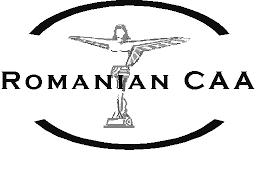Today, April 23, 2020, Regulation (EU) no. 2020/469 transposing relevant requirements derived from the standards and best practices of the International Civil Aviation Organization in the field of air navigation services / air traffic management at European level. It contributes to the uniform implementation and helps the EU Member States to fulfill their obligations deriving from the Chicago Convention, ratified by Romania in 1965.
These new rules will gradually become applicable from November 5, 2020 to January 27, 2022.
The main elements of this Regulation can be summarized as follows:
Part-ATS includes a set of technical and organizational requirements for air traffic services. It transposes the latest amendments to Annex 11 to the Chicago Convention and the PANS-ATM Air Navigation Services Procedures;
Part-MET transposes amendments 77 and 77-B of Annex 3 to the Chicago Convention, in particular requirements for SIGMET messages (information issued by meteorological watch centers related to the occurrence or forecast occurrence of meteorological phenomena and the development of and space and which may affect the safety of the aircraft in flight), the World Area Forecast Center (WAFS), the implementation of the Global Reporting Format for the assessment and reporting of runway condition;
Part-AIS includes a set of technical and organizational requirements for air traffic services. It transposes the latest amendments to Annex 15 (16th edition) to the Chicago Convention. Summarizes EU-wide experience in the provision of aeronautical information services and ensures proportionality in the size, type and complexity of aeronautical information service providers. In addition, Part-AIS incorporates the detailed requirements for the quality of aeronautical data and aeronautical information found in Regulation (EU) No 182/2011. 73/2010 now repealed;
Part -FPD introduces new requirements for the certification and ongoing oversight of flight procedure design service providers and organizations conducting flight procedure design activities. These requirements will allow for the common recognition of certificates issued by EU Member States and will avoid duplication of certification and continuous oversight activities. Member States will carry out airspace design on the basis of common, harmonized rules that will ensure that airspace structures are designed, monitored and validated before being implemented and used by aircraft in flight.
On this occasion, Regulation (EU) no. 139/2014 regarding Aerodromes and Regulation (EU) no. 923/2012 regarding the Air Rules standardized at European level to ensure consistency in European legislation.
The European Aviation Safety Agency (EASA) will publish acceptable means of compliance and related guidance materials to facilitate the implementation and enforcement of this set of rules. »
Regards
